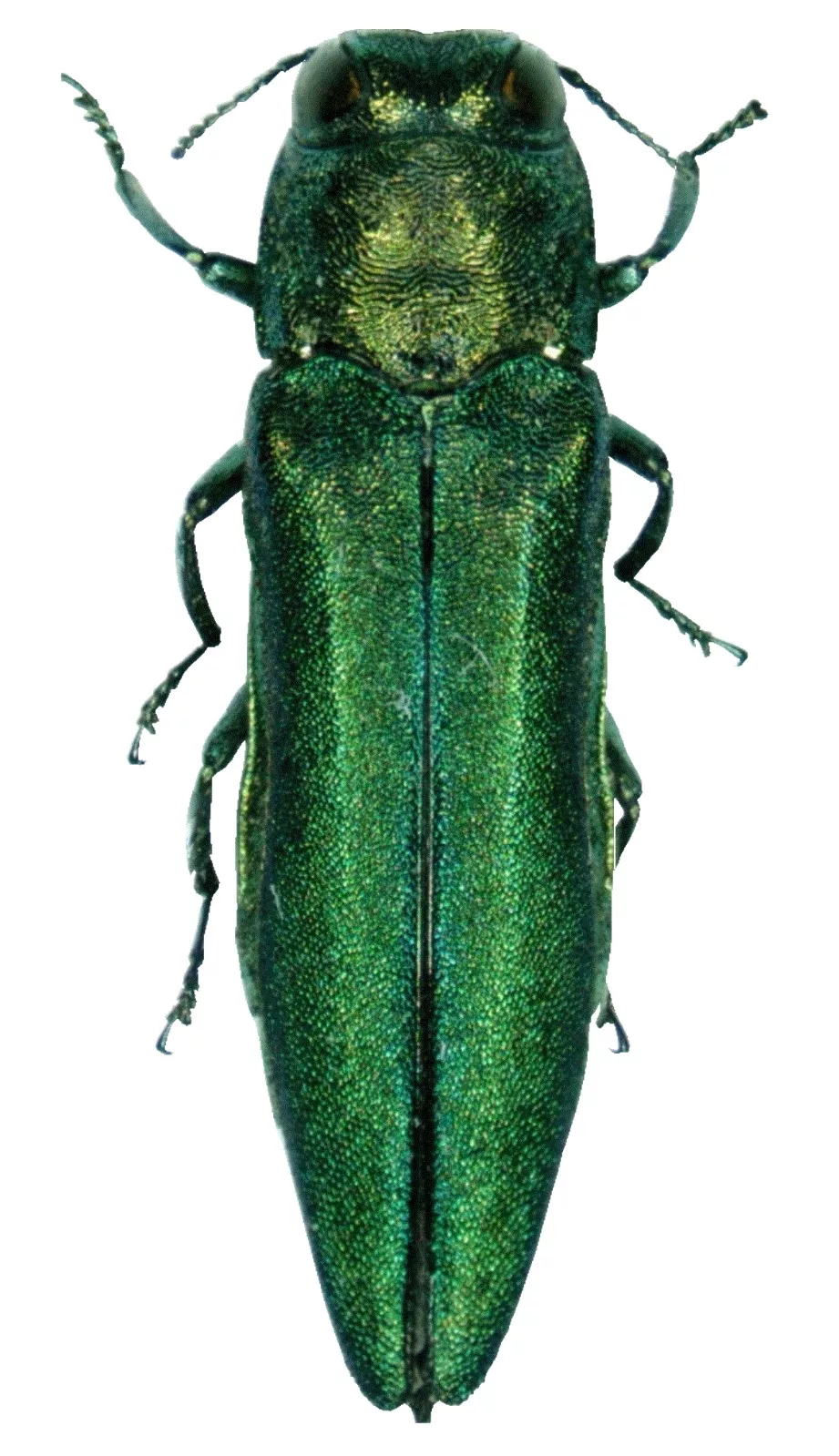
LAMOURE COUNTY, N.D. (NewsDakota.com) – The North Dakota Department of Agriculture (NDDA) confirmed the presence of emerald ash borers (EAB) in LaMoure County this week, marking the first detection of the invasive species in the state. The adult EABs were initially found in a trap nine miles north of Edgeley, and further investigation revealed larvae, officially confirming the infestation. North Dakota becomes the 37th state to report EAB presence.
Agriculture Commissioner Doug Goehring emphasized that the NDDA and its partners have been preparing for the emerald ash borer’s arrival for years. “Now that it is unfortunately here, we urge North Dakota residents and travelers to be proactive to keep EAB from spreading,” a media release states.
EAB, a wood-boring insect native to Asia, was first discovered in the United States in 2002 and has since spread across 37 states, killing hundreds of millions of ash trees. North Dakota is home to over 90 million ash trees, with ash species constituting 20% to 80% of trees in many urban areas. State Forester Tom Claeys warned that without treatment, infested trees could die within a few years.
In response to the detection, the NDDA will extend its existing quarantine to LaMoure County, restricting the movement of regulated materials from infested areas. Travelers are urged to avoid transporting firewood and to source it locally to help prevent further spread. Violations of quarantine rules could lead to civil penalties of up to $5,000.
The NDDA will collaborate with the North Dakota Forest Service and North Dakota State University Extension to assess the extent of the infestation, monitor ash trees, and conduct outreach efforts in the coming months. The December 2023 ice storm, which caused significant tree damage in the area, will complicate these efforts.
Residents are encouraged to inspect their ash trees for signs of EAB infestation, including dieback, S-shaped tunnels beneath the bark, D-shaped exit holes, and increased woodpecker activity in the upper canopy. Insecticide treatments are available to protect high-value trees, but the NDDA advises waiting until EAB is detected within 15 miles before taking action. Only certified tree care professionals should administer treatments, as most options are restricted.
